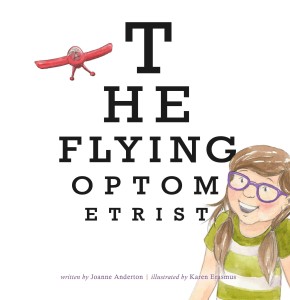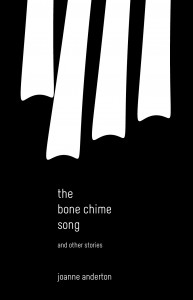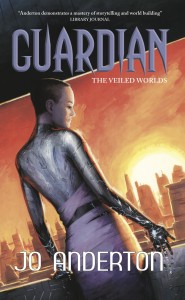I’m honoured to have Keith Stevenson, author, publisher, editor-extraordinaire, visiting to talk about his book Horizon (out now from HarperVoyager Impulse!) In particular I asked Keith to talk about FTL travel in his novel, because where would SF be without it?
Take it away Keith!
Horizon — Engage: Tinkering With a Quantum Drive
— Engage: Tinkering With a Quantum Drive
I’d like to thank Joanne for giving over some space on her blog for the Horizon Blog Tour.
Horizon is my debut science fiction novel published by HarperVoyager Impulse. It’s an SF thriller centred on a deep space exploration mission that goes very wrong, with repercussions for the future of all life on Earth.
While the main focus of the story is the tense drama that plays out between the crew in the cramped confines of the ship, a lot of the grunt work in good science fiction goes into imagining exactly how the ‘props’ that support the main action could actually function.
When I imagined the mission of the explorer ship Magellan to the Iota Persei star system thirty-four light years from our own planet, I knew I had to work out how the ship could get there. I wanted the trip to be short enough so the crew would still be relatively young when they reached their destination. That meant they had to travel at an appreciable percentage of the speed of light. It also meant the ship needed access to considerable amounts of energy in order to accelerate to that kind of speed and maintain it for the length of the journey.
The availability of fuel is a major limiting factor for any journey beyond the ‘small’ volume of space around our own solar system. There are no service stations in the interstellar void, and the problem with having a huge fuel tank is that a lot of the fuel is used up just moving the fuel. NASA estimates if you wanted to send a space shuttle to the nearest star to our sun using current rocket technology, you’d need more mass in fuel than currently exists in the universe. And even if you did find enough fuel it would take 900 years to get there.
So I had to cast around for a powerful source of readily available energy the ship could tap into. Luckily it seems the vacuum of space is full of energy, if you know how to find and extract it.
Zero-point energy is one of the effects predicted by quantum theory, an idea so mind-bending it can argue strongly that a cat inside a box is both alive and dead at the same time. This theory also predicts that each cubic centimetre of ‘empty’ space actually contains enormous amounts of randomly fluctuating energy.
The effects of zero-point energy can be observed in the laboratory, most notably in the Casimir effect which creates an attractive force between two plates that are close together. Scientists believe the attraction is due to the closeness of the plates excluding certain wavelengths of zero-point energy (because they’re too big to fit between the gap). As a result the energy density between the plates is lower than the energy density around the plates and this energy gradient pushes the plates together. See what I mean about the mind-bendy bit?
Another effect of zero-point energy is the Lamb shift which shows that zero-point energy fluctuations ‘shift’ electrons orbiting a nucleus into different — higher or lower energy — orbits.
Now a lot of this is ‘left-field’ science but Horizon is a work of fiction, so I’m happy to run a ‘what-if’ scenario for the good of the story.
The drive in Magellan takes advantage of these two observable effects of zero-point energy. Feeding molecules into a tiny tube, a buckytube, cuts those molecules off from some of the zero-point wavelengths (the Casimir effect) which means the electrons fall into a lower energy orbit (the Lamb shift) and that ‘energy loss’ from the atom is harvested by the Magellan’s drive.
Here’s an extract from the novel describing the effect:
The drive chamber took up the rear quarter of the ship and fully two-fifths of its volume. Most of that was filled by the six huge plasma thrusters that channelled the engine’s output. Cocooned in space suits, Cait and Harris stood on the gantry running along the midline of the rear wall. The vast superstructure surrounded them, and out past the thrusters lay the infinite. The starfield crowded into an ellipse, as if viewed through a thick lens. Cait knew that at this speed the view was blue-shifted as well, but she couldn’t tell the difference. The combined effect made her feel like an ant clinging to a very small ledge.
Her eyes drifted back to the featureless black heart of the drive. Their survival depended on balance — macro and quantum, thrust and inertia. The black box was the fulcrum, fed by the vacuum surrounding it. On one hand, it sucked hydrogen atoms into its nanotubes, cut them off from the quantum wavelengths that kept them spinning, and fed the energy released to the huge plasma thrusters. And on the other, it generated a quantum field that enhanced the push and decreased the inertia just enough so the harnesses could absorb the residual V-shift from the drive pulses. Exactly 189 x 1030 bucky-tubes sat inside the box, cycling ten times that number of hydrogen atoms through every second. The processing power to keep it balanced was tremendous, and it all relied on the proper functioning of the neural network that made up the Phillips persona.
‘If this crashes in a heap, we won’t know what hit us,’ she said into the suit mic.
‘If this crashes in a heap, I’ll quit my job.’
So where do the molecules come from? Hydrogen is present everywhere in space, but perhaps not in the quantities required to drive the ship, although recently there’s been reports of rivers of hydrogen flowing through the galaxy. However Heisenberg’s uncertainty principle implies that particles are continually popping into and out of existence even in the vacuum of space, and that may mean there are enough particles at any given instant to be harvested by Magellan. It’s also possible that the ship recycles the harvested particles, releasing them from the buckytubes to be ‘re-energised’ by the zero-point energy wavelengths before being fed back into the tubes.
More recently NASA has been looking at a different kind of zero-point energy drive, manipulating the connection between mass and spacetime to lower inertia through an interaction with the zero-point energy fields and somehow drive the ship forward. And then there are theories around harnessing cosmic background radiation, dark energy and dark matter that go way beyond the counter-intuitive drive of the Magellan. If your mind was bent before, this new stuff will leave it well and truly twisted.
Follow the Horizon Blog Tour
3 November — Extract of Horizon — Voyager blog
4 November — Character Building: Meet the Crew — Trent Jamieson’s blog
5 November — Welcome to Magellan: Inside the Ship — Darkmatter
6 November — Futureshock: Charting the History of Tomorrow — Lee Battersby’s blog
7 November — Engage: Tinkering With a Quantum Drive — Joanne Anderton’s blog
10 November — Stormy Weather: Facing Down Climate Change — Ben Peek’s blog
11 November — Time Travel: Relatively Speaking — Rjurik Davidson’s blog
12 November — Consciousness Explorers: Inside a Transhuman — Alan Baxter’s blog
13 November — From the Ground Up: Building a Planet — Sean Wright’s blog
14 November — Life Persists: Finding the Extremophile — Greig Beck’s Facebook page
17 November — Interview — Marianne De Pierres’ blog
Keith Stevenson is a science fiction author, editor, publisher and reviewer. His debut novel Horizon is available as an ebook via http://www.harpercollins.com.au/books/Horizon-Keith-Stevenson/?isbn=9781460704653
His blog is at http://keithstevensonwriter.blogspot.com.








1 comment
Ahhh you finished, everyone around me is getting hooked. I’ve got a bit more to go on book 1.Ok so suggestions:1) Any of the books by Gregory Maguire. Wicked, Son of a Witch, Confessions of an Ugly Stepsister.2) Everyone Worth Knowing by Lauren Weisberger. She wrote The Devil Wears Prada. Which in itself is a good book, different from the movie.3) Anything by Nicholas Sparks4) White Oleander by Janet Fitch. Again a movie after the book, but the book is different.Thats all I’ve got for now. I need to finish the Twilight series now after so much talk about it.